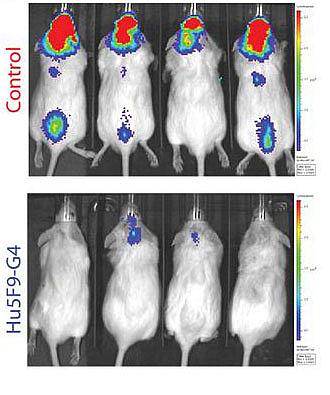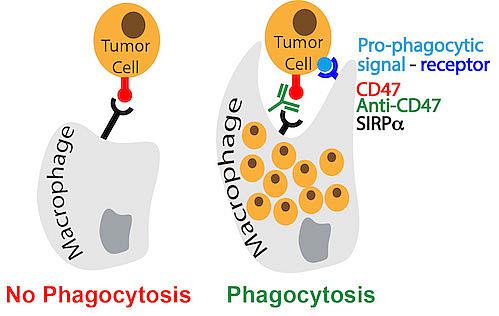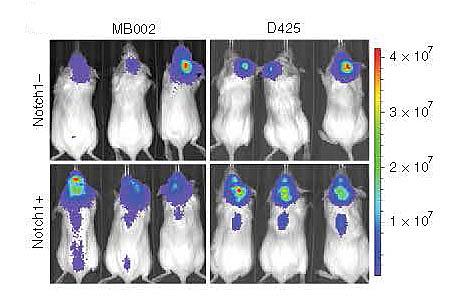
Cheshier Lab Research

Cheshier Lab Research
Anti-CD47 to Treat Medulloblastoma and Glioblastoma in Children
We use innate immune therapy to target malignant brain tumor in children. CD47 is a tumor cell surface protein that binds to SIRPa on macrophages. This binding inhibits phagocytosis of tumor cells. We use a humanized anti-CD47 antibody (Hu5F9-G4) as a checkpoint inhibitor to disrupt the CD47-SIRPa axis. Our previous works (see laboratory publications) demonstrated the effectiveness of anti-CD47 treatment in:
- increasing phagocytosis of brain tumor cells (including cancer stem cells)
- inhibiting tumor growth
- increasing the survival of xenograft mice compared to untreated controls
NCI’s Cancer Therapy Evaluation Program (CTEP) and Pacific Pediatric Neuro-Oncology Consortium (PNOC) are currently using these results to justify and design clinical trials in pediatric tumor patients.
Combining Anti-CD47 with Other Therapies to Treat Medulloblastoma and Glioblastoma in Children
We use anti-CD47 immune therapy in combination with standard therapy (radiation and chemotherapy) to target malignant brain tumor in children. Our most recent work demonstrated the effectiveness of combining anti-CD47 treatment with radiation or chemotherapy in treating adult GBM-bearing mice compared to mice treated with individual therapy. Our goal is to apply the same treatment on pediatric GBM- and MB-bearing mice. The goal is to increase the efficacy of phagocytosis with minimum toxicity to normal brain tissues. Furthermore, we are developing a wide range of strategies combining anti-CD47 with oncolytic virus, macrophage modulating agents, T-Cell checkpoint inhibitors, and thermal ablation of tumor cells.
Understanding the role of Notch 1 and Notch 2 in Regulating Self-renewal and Viability of Medulloblastoma
Our recent work in Nature Communications (see laboratory publications) showed that the Notch 1 signaling pathway regulates both the initiation of metastasis and the self-renewal of medulloblastoma. We aim to further understand the molecular mechanism of the role of Notch 1 and Notch 2 in regulating the metastasis and self-renewal of medulloblastoma.



